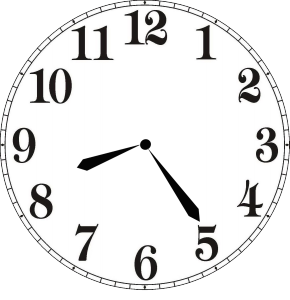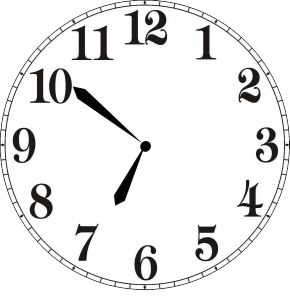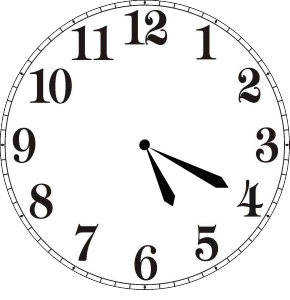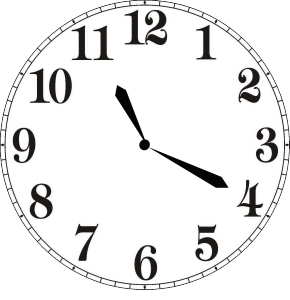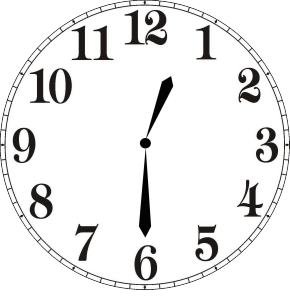How to Tell Time in Spanish: A Comprehensive Guide

Get our free email course, Shortcut to Conversational.
Have conversations faster, understand people when they speak fast, and other tested tips to learn faster.
More info¿Que hora es? Knowing how to tell the time in Spanish is an important, real-world thing to learn early on as a beginner student.
In this guide, we’ll show you the most common ways to tell the time in Spanish, as well as a few alternative ways you’ll sometimes hear.
Telling Time In Spanish: The Main Structure
We use the verb SER (“to be”) to tell time in Spanish.
We say:
Es la una… (one is singular)
Son las dos/tres/cuatro… (Two / Three etc. they are plural)
How do you answer what time is it in Spanish?
So for instance, if someone asks you ¿que hora es?, and it’s 2:00pm, you would say “son las dos”.
There’s a bunch of different ways to go about telling the time. Let’s start with the most popular.
Number + Number
This is the easiest and most popular way to express the time.
For 1-30 minutes we use Y (“and”) before the minutes.
Hora + y + minutos
For instance:
- 1:10 – Es la una y diez
- 8:05 – Son las ocho y cinco
You can usually drop the “son las” and just say “ocho y cinco”. The “son las” is basically the “it’s” in “it’s 8 o’clock”.
Number + Para + Number
For 31-59 minutes there are two ways that can be used:
Minutos + PARA (la/las) + Hora
For instance:
- 2:35 – Son veinticinco para las tres
- 11:45 – Son cuarto para las doce (see next section for explanation of cuarto)
This is the equivalent of saying “until” or “to” (e.g. it’s 10 to five) in English.
15 / 30 minutes
When we talk about 15 minutes before or after the time, we usually use cuarto.
- 7:15 – Son las siete y cuarto.
- 9:45 – Un cuarto para las diez.
When we talk about 30 minutes after the hour, we usually use y media.
- 8:30 – Son las ocho y media.
O’clock
Sometimes we use en punto when it’s on the hour.
- 10:00 – son las diez en punto
- 5:00 – son las cinco en punto
How to ask for the time in Spanish?
One of the most common questions to ask the time is: ¿Qué hora es?
- A: ¿Qué hora es?
- B: Son las dos y media.
The nice thing is all of these different ways of expressing the time make sense, so you don’t have to use a particular one.

Unsure what to learn next?
Download the exact curriculum that thousands of BaseLang students have used to become fluent in Spanish.
Download Guide Now!
Times in Spanish: Quiz
Let’s practice. What time is it? Some clocks have multiple ways to say it, do both.
1. Son las __ __ __ __ __ y __ __ __ __ __ __ 2. Son las __ __ __ __ __ y__ __ __ __ __ __
3. Son las __ __ __ __ y __ __ __ __ __ __ __ __ __ __
4. Son las __ __ __ __ y __ __ __ __ __ __ __ __ __
5. Son las __ __ __ __ para las __ __ __ __ __
6. Son las __ __ __ __ __ y __ __ __ __ __ __
7. Son las __ __ __ __ y __ __ __ __ __ __
8. Son las __ __ __ __ y __ __ __ __ __ __ __ 9. Son las __ __ __ __ y __ __ __ __ __
10. Son las __ __ __ __ 11. Son las __ __ __ __ __ __ __ __ __ __ __
12. Son las __ __ __ __ y __ __ __ __ __
Key:
- Son las nueve y quince
- Son las nueve y cuarto
- Son las ocho y veinticinco
- Son las seis y cincuenta
- Son las diez para las siete
- Son las cinco y veinte
- Son las once y veinte
- Son las doce y treinta
- Son las doce y media
- Son las tres
- Son las tres en punto
- Son las once y cinco
TIP: Click here for free access to our Private Memrise flashcards, where you can train every lesson, including this one. They’re the same flashcards our students use! Click here for that.

